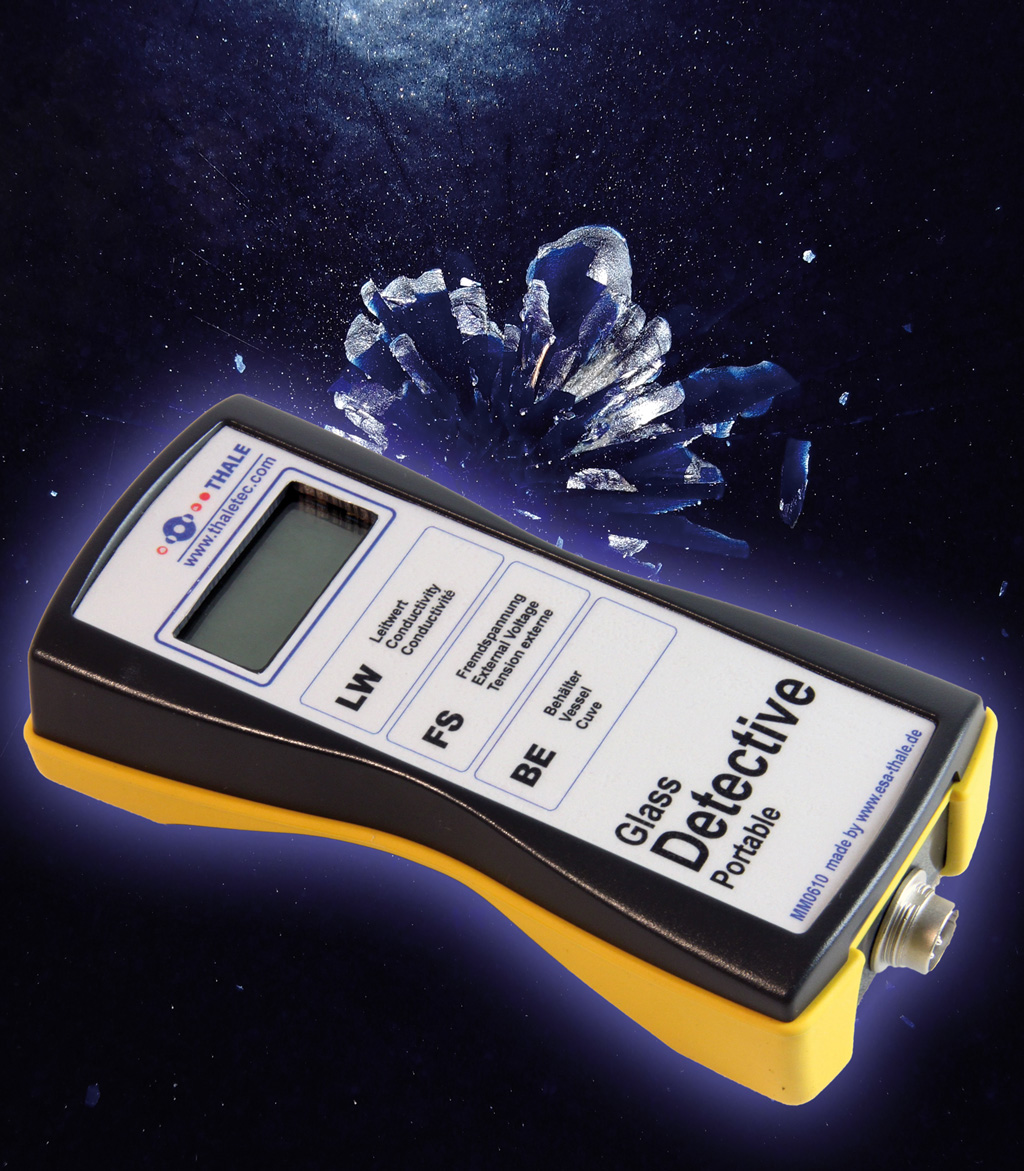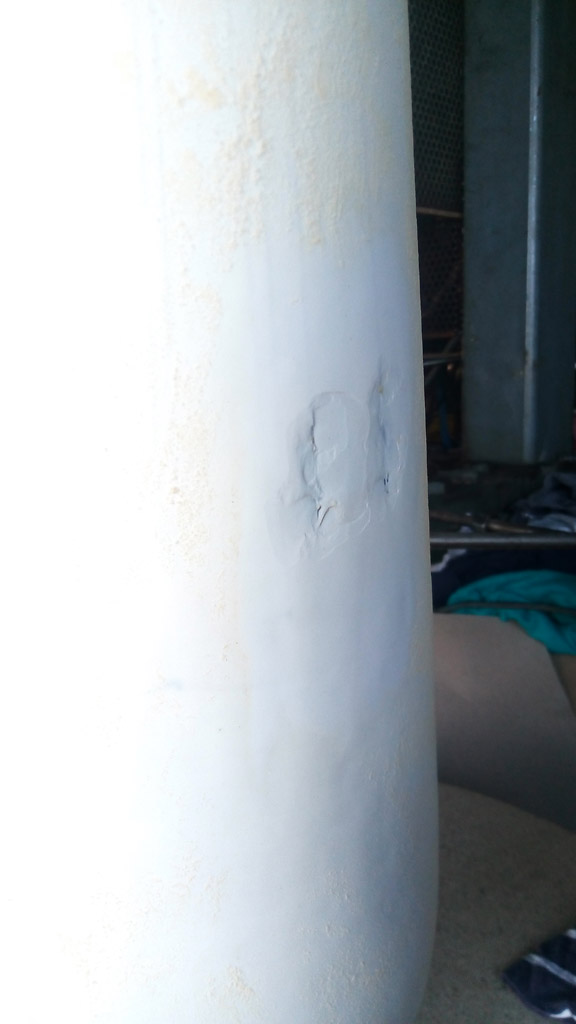Chances and risks of continuous glass-lining monitoring
Ensuring the integrity of the glass lining of process equipment and components is of fundamental importance for the operational safety and availability of the plant. Since highly corrosive, toxic or highly pure and very expensive substances are often processed in glass-lined apparatus, damage to the glass lining of the apparatus can have catastrophic consequences: escaping product contaminates and pollutes the environment, endangering personnel and resulting in high costs.
Requirements for production and operation
Due to the effects which glass lining damage can have on people and the environment, the most stringent requirements must be met in the manufacture and operation of the equipment:
Top quality in design, production and glass lining on the part of the manufacturer is indispensable: first of all, the mechanical design must be correct. Wall thicknesses must be calculated correctly and forces resulting from the process, and possibly the stirring process, must be known and incorporated into the dimensioning of the components.
During the manufacture of the apparatus, a large number of standards and norms, implemented in full by only a few companies in Europe, must be taken into account, be they special requirements regarding the selection of materials, the traceability of processes, the test steps for quality assurance or even the level of qualification of the executing employees.
The requirements for glass lining are particularly high: THALETEC today produces, practically exclusively, pore-free specified containers in whose case the glass lining otherwise fully meets the stringent requirements of DIN EN ISO 287211. Continuous process monitoring and tests accompanying production are also a must during glass lining.
But the operator, too, has to contribute his share towards operational safety. An important aspect is the systematic inspection of apparatus and components with regard to damage.
Proven test methods
For glass-lined apparatus, and especially for testing glass lining, several test methods, briefly described below, are available:
A visual inspection of the glass lining by an experienced THALETEC employee or service technician is the starting point of a systematic control of glass lining. The trained eye can often already recognise, unaided, whether and where problems can occur.
With regular coating thickness measurement, the operator can check that the glass lining is effective. Coating thickness measurement measures the coating thickness of the glass lining at certain points and compares it with a minimum permissible limit value. Multilayer glass lining from THALETEC, such as glass lining with ABRISIST VC (Visual Control) (Flyer K028), is helpful for recognising critical areas. Areas with substantial glass lining wear due to corrosion or hydroabrasion can thus be quickly detected as a result of a change in the colour of the glass lining.
The procedures described so far require entering or going over the equipment. With the THALETEC Glass Detective Portable, discontinuous glass lining inspection can be carried out even in inaccessible areas without getting into the machine. For the test, the equipment is filled with a conductive medium. After insertion of the probe, it is indicated whether there is an electrically conductive point, which may indicate damage to the glass lining, on any of the wetted areas. The Glass Detective is configured in such a way that only those areas which consist of the equipment construction material are detected; installation parts made of stainless steel, Hastelloy or tantalum, as well as repair areas with tantalum, are not detected.
All procedures described so far are discontinuous, i.e. they are carried out regularly, but not during the operation of the equipment. THALETEC's ‘glass lining probe’ is a system for continuous glass lining monitoring in non-hazardous areas. In principle, this system is based on the same concept as the Glass Detective Portable. However, the electrically conductive contact points of the test probe are fixed in the glass-lined equipment - preferably installed at the lower end of a baffle.
Limits of the continuous monitoring of systems
At first glance, a continuous monitoring system permanently installed in the equipment would certainly be an ideal solution. Continuous monitoring and permanently installed systems for monitoring glass lining in the equipment do, however, have technical limits:
- False alarms during the operation of such sensors are not excluded. The consequences of false alarms can be serious: in addition to the economic loss due to the shutdown of the plant, operating personnel will become blunted over time, so that damage actually occurring may then be ignored.
- In procedures with insufficiently electrically conductive media, continuous glass lining monitoring cannot function because sufficient conductivity of the medium is functionally relevant for the probe.
- Today, many production plants are designed as multipurpose plants in which a large number of products with different properties and requirements are produced. Often not all products meet the requirements for continuous glass lining monitoring.
- The gas space above the liquid is not monitored, as there is no electrical conductivity here either.
- The process can lead to deposits and impurities on the built-in parts and the sensors. There is a risk that the sensors will be covered by the coating and that the functionality of the measurement can no longer be guaranteed.
- Under certain circumstances, electrochemical corrosion of the sensors occurs, destroying them.
- During the emptying of an item of equipment, leaks may be detected in the downstream pipework. Since continuous monitoring is unable to locate a defect, this can lead to false alarms and unnecessary shutdown of the equipment.
- If the glass lining monitoring probe is installed at the lower end of the baffle, the area below the baffle cannot be monitored because the contact points are above the liquid level and are no longer wetted.
- In processes, different filling quantities are often processed during the individual process steps, so that states can occur even during operation in which continuous monitoring is not guaranteed.
- Components in the glass-lined equipment which are not electrically earthed are not detected by glass lining test probes and are therefore not monitored.
- Superficial damage to the glass lining which does not expose the steel base material is not detected by continuous processes. This also means that it is not possible to determine whether the product has been contaminated by splintered glass lining.
- The location of the damage cannot be determined.
- The contact points of the probes are made of materials such as gold, platinum or comparable high-value metals. These materials can react catalytically with the medium and lead to its contamination. In the worst case, the contact points are corrosively attacked, leak and fail. Alternatively, the supply lines to the contact points can also be damaged and corroded.
Therefore, continuous corrosion monitoring of glass-lined equipment can and must in no case replace the regular tests described above. In addition, the operational risk can even increase if the failure possibilities of continuous glass lining monitoring are taken into account.
THALETEC therefore recommends:
- Perform glass lining inspections, visual inspection, high-voltage inspection and coating thickness measurement regularly or commission a specialist company, such as THALETEC, with trained staff to do so.
- Use glass linings which help you to recognise glass lining wear early, such as THALETEC ABRISIST VC (Flyer K028)
- Avoid introducing weak points into your glass-lined equipment as would be the case with the contact points required for continuous procedures.
Advice required? Contact your area manager or e-mail service(at)thaletec.com. We are happy to assist you in carrying out your regular inspections.





